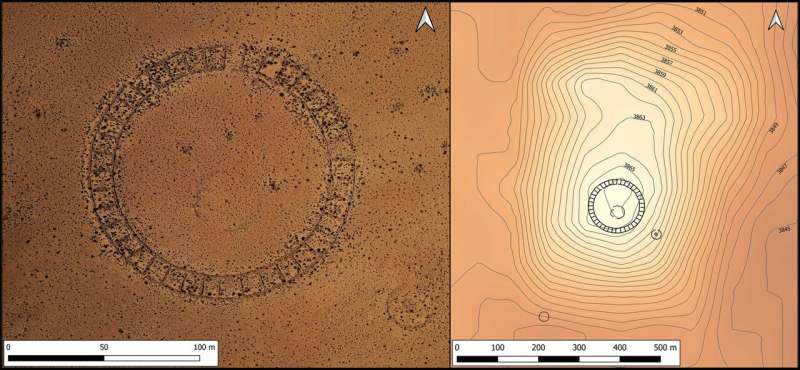More than 100 pre-Hispanic religious sites linked to ancient Andean cults were discovered in Bolivia

A trio of archaeologists from the National Scientific and Technical Research Council, Argentina, the French National Center for Scientific Research, and the Institute of Research for Development, France, has found more than 100 pre-Hispanic religious sites that they believe are linked to ancient Andean cults in Bolivia.
In their paper published in the journal Antiquity, Pablo Cruz, Richard Joffre and Jean Vacher, describe the sites they found and highlight one in particular that stood out from the rest.
In this new effort, the researchers were studying hilltops in the Carangas region of Highland Bolivia, which was once home to pre-Hispanic people.
By studying images captured by satellites and also examining multiple sites on the ground, the researchers learned more about the sites and to make some guesses regarding their nature and use.
The sites were concentric circles of walls created on hilltops using mostly local material. Most sites featured multiple circles. In all, the research team was able to identify 135 such hilltop sites—all were dated to between AD 1250 and 1600.
They note that the large numbers of ceramic fragments found at all of the sites had once been part of plates, jars or bowls—this, they suggest, indicates that the sites had served a ceremonial purpose.
Prior research has shown that the people of the region conducted rites known as wak’a, which could have been related to the rings on the hilltops.

The group also found one site, Waskiri, that stood out from the others due to both its size and intricacy. It was 140 meters in diameter and was made using two circled walls, one inside the other, the second somewhat smaller.
The two rings were connected by adjoining enclosures and contained many ceramic fragments. Also, there was what the researchers describe as a plaza at the center of the ring structure, which also featured ceramic fragments.
According to the researchers, the design of the circles suggests they may have had an Incan influence.
The team says the sites represent a rich area of study for a part of the Andes that has not been studied well due to its harsh, cold climate.